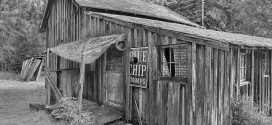Just to prove that they are not quite ready for the history books, sales of foreclosures and short sales increased slightly last year. Institutions bought 7.9 percent of all homes.
RealtyTrac reported that short sales and foreclosure-related sales — including both sales to third party buyers at the public foreclosure auction and sales of bank-owned properties — accounted for a combined 16.2 percent of all U.S. residential sales in 2013, up from 14.5 percent of all sales in 2012 and up from 15.2 percent of all sales in 2011.
The median price of a distressed residential property — in foreclosure or bank-owned — was $108,494 in December, 38 percent below the median price of $174,401 for a non-distressed residential property.
“It may surprise some to see distressed sales rising in 2013 given that foreclosure starts dropped to a seven-year low for the year,” said Daren Blomquist, vice president at RealtyTrac. “And while short sales did trend lower in the second half of the year, there are still more than 1.2 million properties in the foreclosure process or bank-owned, providing a sizable pool of inventory that the housing market is in the process of absorbing. Meanwhile, non-distressed sellers have not listed their homes for sale in droves, helping to keep the distressed share of sales at a stubbornly high level.”
Other high-level findings from the report:
Sales of bank-owned properties (REO) accounted for 9.3 percent of all U.S. residential sales in December, up from 8.7 percent in the previous month and 9.2 percent in December 2012.
States with the highest percentage of REO sales in December were Nevada (18.9 percent), Michigan (18.4 percent), Ohio (17.8 percent), Arizona (15.7 percent), and Illinois (14.7 percent).
More than 436,000 REO properties sold in 2013, accounting for 9.3 percent of all U.S. residential sales, up from 9.1 percent in 2012 and up from 8.7 percent in 2011.
Short sales (where the sale price is below the total amount of outstanding loans secured by the property) accounted for 5.7 percent of all U.S. residential sales in December, up from 5.1 percent in November but down from 6.7 percent in December 2012.
States with the highest percentage of short sales in December were Nevada (15.3 percent), Florida (14.4 percent), Illinois (9.0 percent), Maryland (8.2 percent), New Jersey (7.9 percent), and Michigan (7.2 percent).
More than 256,000 short sales occurred in 2013, accounting for 5.8 percent of all U.S. residential sales, up from 4.9 percent of all sales in 2012 but down from 6.0 percent of all sales in 2011.
Sales to third-party investors at the foreclosure auction accounted for 1.2 percent of all U.S. residential sales in December, up from 1.1 percent in November and up from 0.8 percent in December 2012.
Major metros where third party foreclosure auction sales accounted for at least 2.5 percent of all residential sales included Atlanta (4.7 percent), Orlando (3.9 percent), Miami (3.9 percent), Tampa (3.4 percent), Columbia, S.C. (2.8 percent), Las Vegas (2.8 percent), and Charleston, S.C. (2.8 percent).
More than 48,000 U.S. properties sold to third parties at foreclosure auction in 2013, accounting for 1.0 percent of all U.S. residential sales, up from 0.5 percent of sales in 2012 and 0.5 percent of sales in 2011.
All-cash purchases accounted for 42.1 percent of all U.S. residential sales in December, up from a revised 38.1 percent in November, and up from 18.0 percent in December 2012.
States where all-cash sales accounted for more than 50 percent of all residential sales in December included Florida (62.5 percent), Wisconsin (59.8 percent), Alabama (55.7 percent), South Carolina (51.3 percent), and Georgia (51.3 percent).
For all of 2013, 29.1 percent of U.S. residential sales were all-cash purchases, but the percentage trended substantially higher in the second half of the year. The 29.1 percent in 2013 was up from 19.4 percent in 2012 and 20.6 percent in 2011.
Institutional investor purchases (comprised of entities that purchased at least 10 properties in a year) accounted for 7.9 percent of all U.S. residential sales in December, up from 7.2 percent the previous month and up from 7.8 percent in December 2012.
Metro areas with the highest percentages of institutional investor purchases in December included Jacksonville, Fla., (38.7 percent), Knoxville, Tenn., (31.9 percent), Atlanta (25.2 percent), Cape Coral-Fort Myers, Fla. (24.9 percent), Cincinnati (19.3 percent), and Las Vegas (18.2 percent).
For all of 2013, institutional investor purchases accounted for 7.3 percent of all U.S. residential property purchases, up from 5.8 percent in 2012 and 5.1 percent in 2011.
 RealEstateEconomyWatch.com Insight and Intelligence on Residential Real Estate
RealEstateEconomyWatch.com Insight and Intelligence on Residential Real Estate

One comment
Pingback: Distressed Sales Bumped Up Last Year | Belair Realty